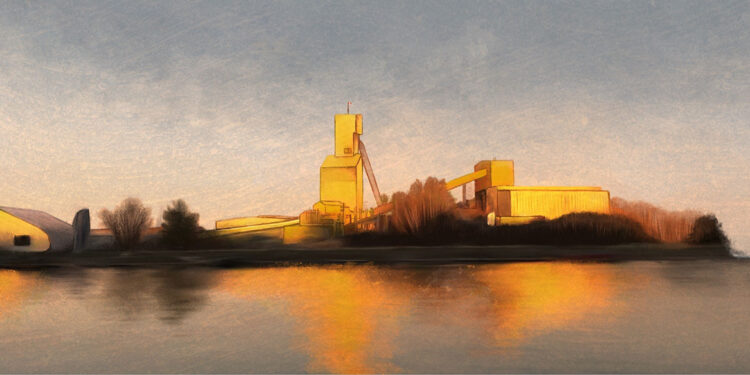1911 Gold Corporation (TSXV: AUMB) (OTCQX: AUMBF) has now laid-out 12,000 metres of exploration drilling in its ongoing 2022 exploration drilling campaign at its 100% owned Rice Lake and Apex (Snow Lake) Gold Properties in Manitoba.
The drilling is following up on priority high-grade intercepts from its Phase I and Phase II drilling programmes at the Tinney and Bidou projects, and to test several new targets generated by the company’s exploration programmes at both the Rice Lake and Apex properties. The company anticipates this initial phase of drilling will be completed by late April 2022.
“Drilling at Tinney and Bidou has clearly identified potential for gold systems of similar scale to the True North deposit at Bissett, which attracted the interest of our significant new strategic investor,” Scott Anderson, Vice President, Exploration, said.
“We are very excited to continue testing these systems, using our advanced 3D geological models to evaluate their potential.
“In addition, our systematic exploration program continues to generate compelling new targets at both the Rice Lake and Apex properties, most of which have no record of previous drilling, and we look forward to seeing the first drillcore and assay results from several of these kilometre-scale structural and geophysical targets in the coming months”.
Rice Lake Gold Property
The Rice Lake Gold Property is located on the Archean Rice Lake greenstone belt, which is the western extension of the prolific Red Lake belt in adjacent Ontario, and is situated along the same fundamental crustal-scale structure—an ancient plate-margin—that produced the exceptional gold endowment of this district.
The company’s consolidated land position, totalling over 58,000 hectares after recent strategic acquisitions, covers a 70-kilometre-long section of a crustal-scale ‘break’, referred to as the Wanipigow fault, that represents a principal control on orogenic gold in the Rice Lake–Red Lake district.
Following up on high-grade intercepts from its previous exploration drilling programmes, the Company is drilling several targets in the Tinney and Bidou project areas, focusing on significant structures that have demonstrated potential to host high-grade gold.
Initial drilling at Tinney will include approximately 2,200 metres to follow-up on previous results at the Edna-Otter and Cougar targets, and approximately 1,300 metres to test several new targets proximal to the Gunnar porphyry intrusion.
Likewise, at Bidou, initial drilling is planned to include 2,100 metres of follow-up drilling at the Bidou South and Bidou Shear targets, as well as 1,400 metres to test two new targets in the northern part of the project area, both of which are associated with historical workings, with no record of previous drilling.
At the Wallace Project, the company plans to complete approximately 2,500 metres of helicopter-supported, first-pass drilling to test five different structures that are favourably situated in the hinge of a regional-scale fold and returned high-grade gold values from the company’s sampling programs.
In addition, an induced-polarisation (IP) survey (Abitibi Geophysics’ OreVision system) has been completed over a 24 line-kilometre grid at the Currie’s Landing Project, in the far western portion of the Rice Lake Property.
The grid was centred on a large-scale, untested, structural target defined by high-resolution magnetic survey data. The company anticipates generating a number of compelling drill targets at Currie’s Landing based detailed 3D inversion and interpretation of the magnetic and IP datasets, with a maiden drill programme anticipated for H2 2022.
For further information please visit: https://www.1911gold.com/












